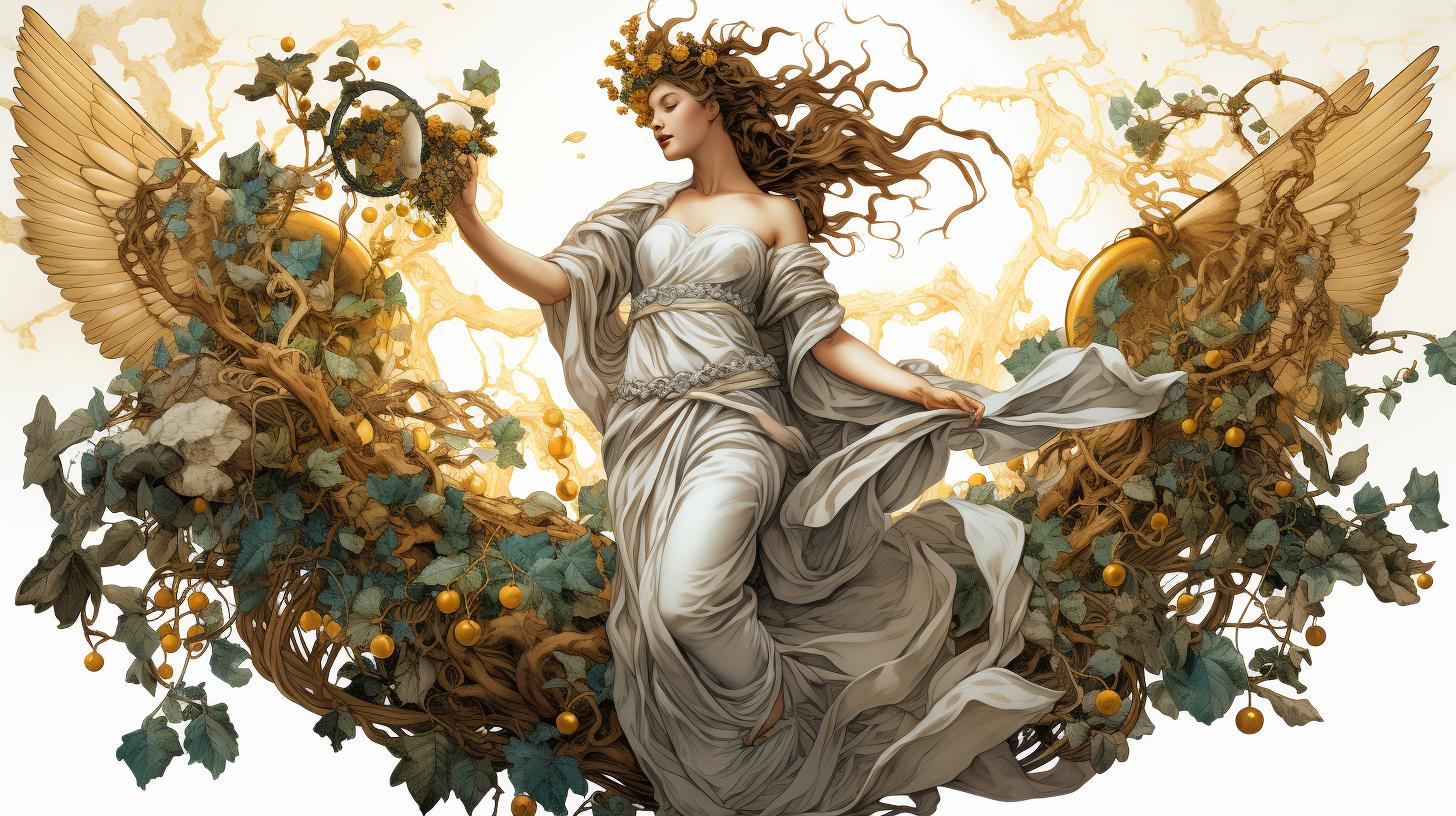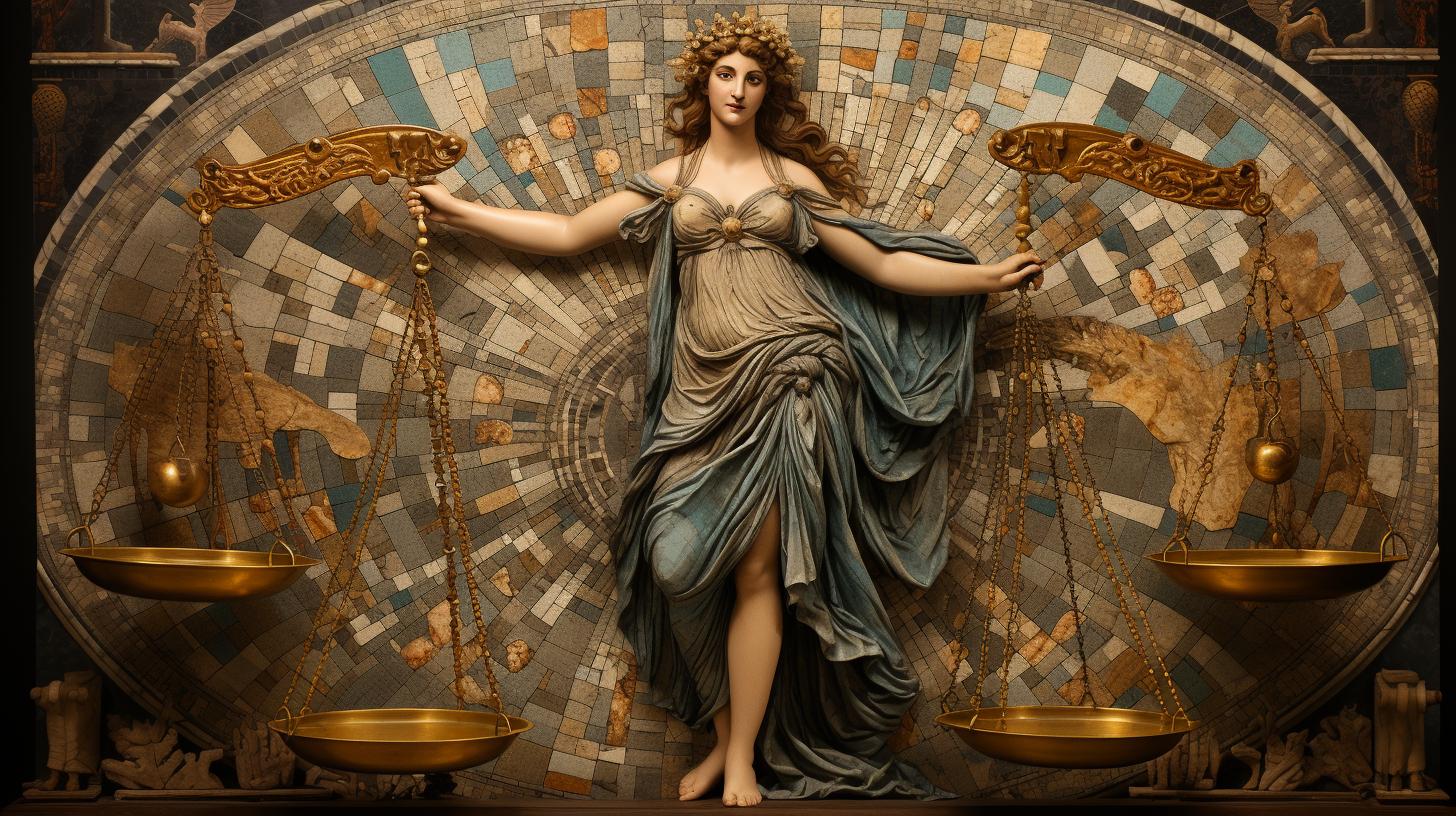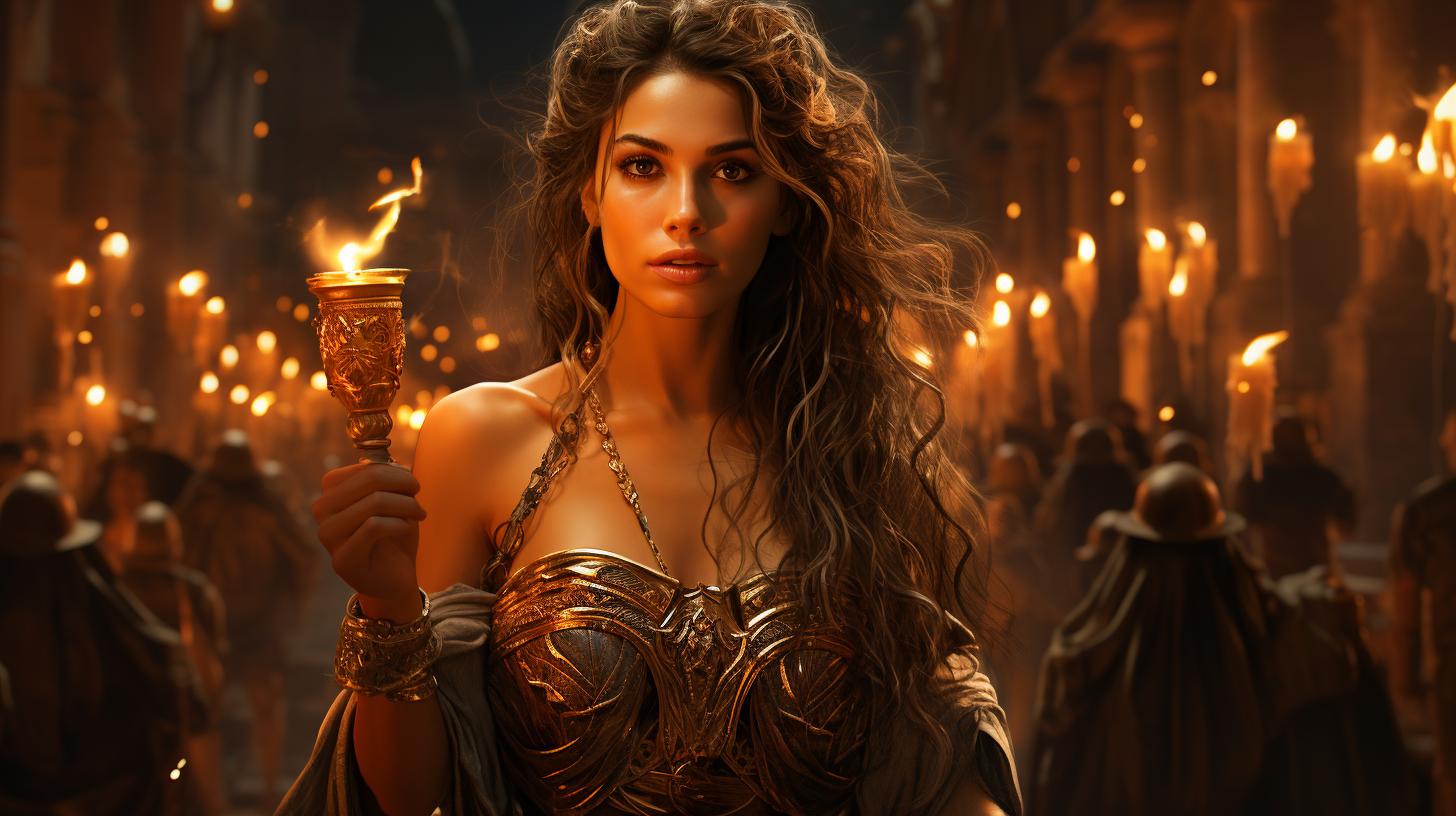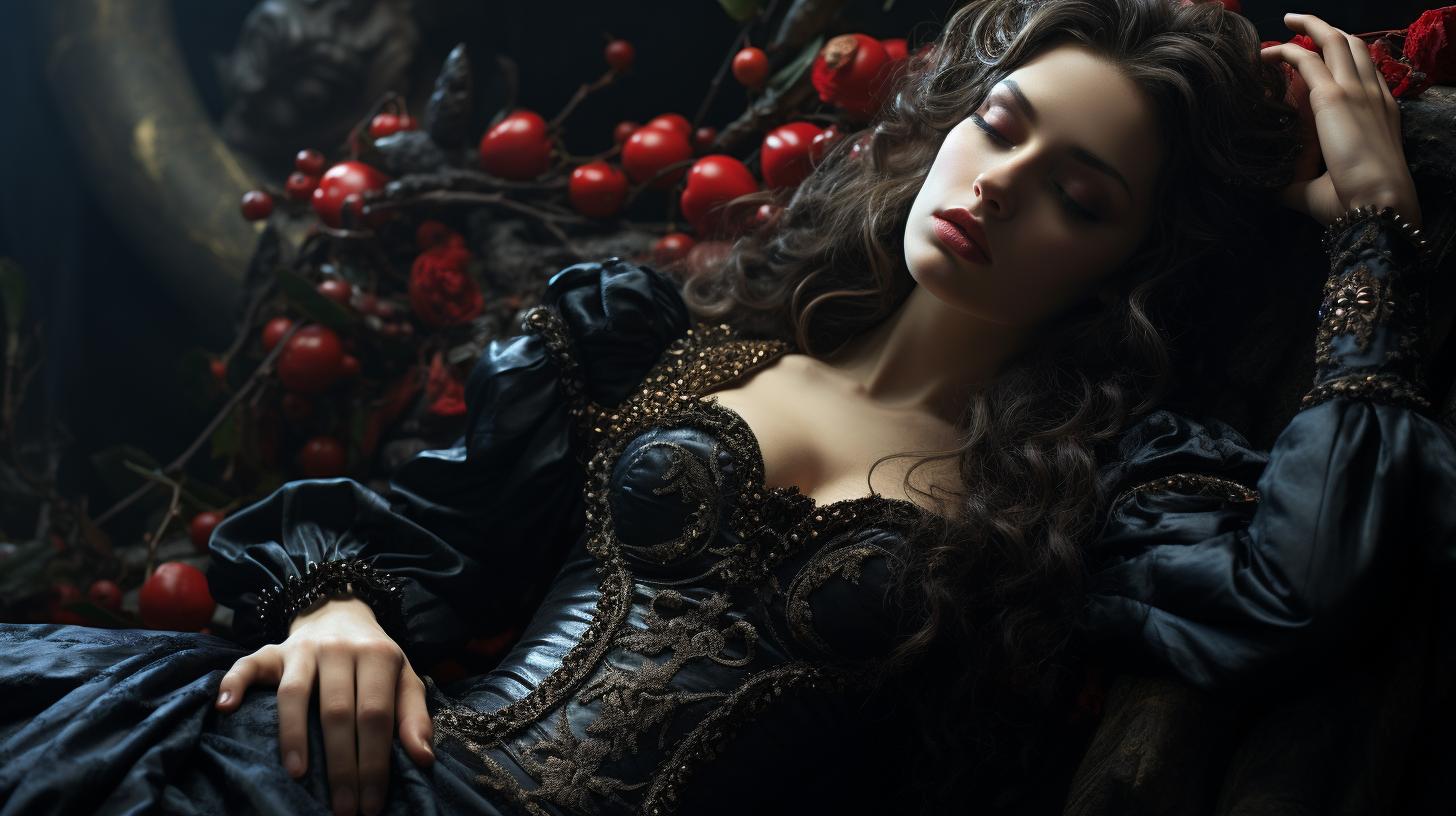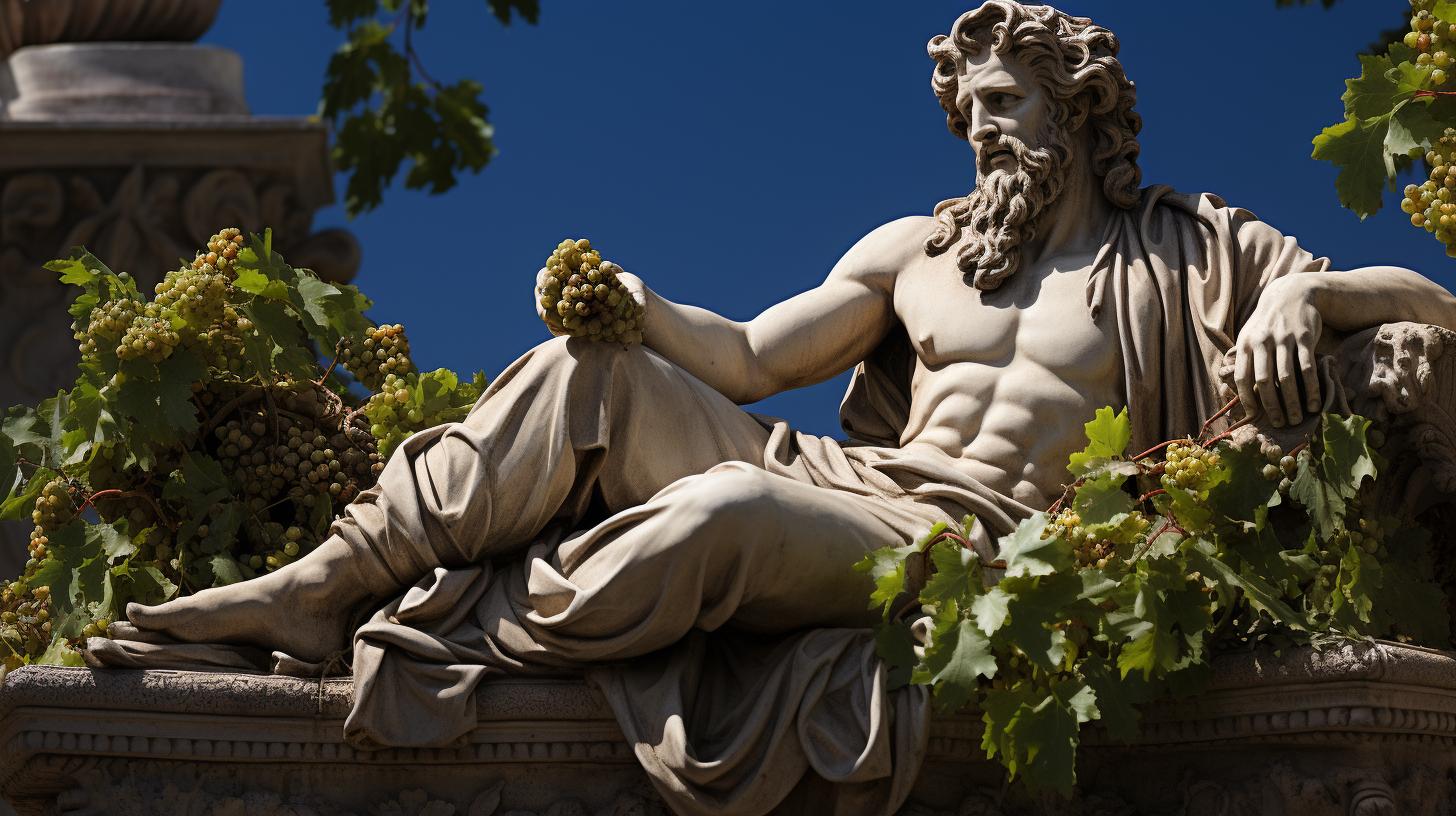Roman Goddess Victoria: The Divine Symbol of Victory in Ancient Rome

Roman Goddess Victoria, also known as the Victoria goddess of victory, a revered figure in ancient Roman religion, embodied the ideals of victory and success. Associated with deities like Jupiter and Mars, she held a special place in the hearts of the Roman army, symbolizing the divine essence of triumph over adversity.
Adorned with wings, laurel crowns, and an olive branch, Victoria’s image, a victory goddess symbol, adorned coins, jewelry, and artworks throughout the Roman Empire. This article delves into Victoria’s mythology, her role in Roman military practices, her connection with Nike—the goddess Victoria symbols in Greek mythology, and her lasting cultural impact, showcasing what is Victoria the goddess of and the significance of roman goddess Victoria symbols.
Let us explore the divine symbol of victory that is Roman Goddess Victoria, often celebrated as the victoria Roman goddess and the Roman version of Nike.
Goddess Victoria: Exploring the Divine Symbol of Victory
The goddess Victoria, or victoria god as she is sometimes referred, holds a significant place in ancient Roman mythology, representing the embodiment of victory and triumph.
Delving into her origins and victoria mythology offers valuable insights into Roman culture and beliefs.
The Origins and Mythology of Victoria
Victoria’s origins trace back to ancient Roman mythology, where she emerged as the personification of victory. As the parallel counterpart of the Greek Nike, Victoria symbolized triumph and success in all aspects of life, essentially becoming the goddess of victory roman figure.
She was often depicted as a strong and radiant figure, embodying the spirit of victory and Venus, the Roman goddess of love, making her not just a victoria goddess but a symbol of prosperity and success across various fronts.
Victoria in Roman Religion and Temple Worship
Victoria played a central role in Roman religion, earning the adoration and reverence of the Roman people. Her significance was especially prominent among the Roman military, who considered her their patroness and sought her favor in battles, solidifying her role as the victoria goddess of victory.
Numerous temples were dedicated to Victoria, including a prominent one on the Palatine Hill, showcasing her elevated status in Roman worship and the various roman goddess victoria symbols that celebrated her victories.
Victoria’s Association with Jupiter, Mars, and Other Deities
These divine associations underscored the belief that victory in battle was not solely achieved through military strength but also with the assistance of the gods, including Victoria the goddess of victory.
The Iconography of Victoria in Ancient Rome
Through art and coinage, the attributes and symbols associated with Victoria were intricately portrayed, capturing the essence of her divine nature and her connection to victory and triumph.
Visual Representation of Victoria in Art and Coinage
In ancient Rome, both artworks and coins showcased the imagery of Victoria.
Artists skillfully depicted her in various forms, emphasizing her role as the bringer of victory. Paintings, mosaics, and sculptures often showcased Victoria in a chariot with wings, soaring through the skies.
This imagery symbolized her ability to swiftly deliver triumph to those she favored.
Coinage was another important medium that popularized Victoria’s image. Her depiction was prominent on Roman coins, presenting her as an inspiration to the masses.
These coins depicted a proud and triumphant Victoria, flaunting her attributes such as wings, laurel crowns, and the symbolic olive branch.
The coinage celebrated military victories and served as a constant reminder of Victoria’s role in ensuring favorable outcomes.
Depictions of Victoria in Roman Sculptures and Reliefs
Roman sculptures and reliefs also portrayed Victoria in various forms. These artworks showcased her elegance, grace, and dynamic presence. Victoria was often depicted with outstretched wings, symbolizing her ability to transcend mortal limitations and deliver victory from above.
Additionally, sculptures and reliefs often depicted Victoria wearing a crown of laurel leaves, an emblem of honor and accomplishment. The laurel’s association with Apollo, the god of prophecy and music, further emphasized Victoria’s divine connection and her association with greatness.
of Wings, Laurel Crowns, and Olive Branches
The symbolism associated with Victoria’s iconography held great significance in Roman culture. The wings that adorned her image, a distinct Victoria goddess symbol, represented her swift and decisive nature, enabling victory to soar and prevail.
They embodied the divine assistance that she provided to those who sought her favor, guiding them towards triumph. This imagery not only depicted her as the Roman goddess of victory but also highlighted her as a divine figure capable of altering the course of events in favor of her devotees.
The laurel crowns, a symbol of honor and accomplishment in Roman culture, further emphasized Victoria’s association with victory. They represented the glory and recognition bestowed upon the conquerors and champions. Such symbols underscore the Roman goddess Victoria’s important powers, illustrating her ability to bestow honor and recognition upon those she deemed worthy.
This association underlines her as a goddess of victory Roman mythology revered for her influential prowess in war, conquest, and peace, embodying the essence of a Roman goddess of war, conquest, and peace.
Another symbol associated with Victoria was the olive branch, which signified peace and prosperity. It represented the aftermath of victory, where conflicts were resolved, and harmony was restored. Victoria’s association with the olive branch highlighted her ability to bring not only triumph but also stability and order to the Roman Empire, showcasing her as a Roman god of prosperity and victory.
The iconography of Victoria in ancient Rome captured the essence of her divine presence and her link to victory. Through artistic representations in various forms, her attributes and symbols communicated her importance in both the religious and military realms of Roman society, solidifying her status as the Victoria Roman goddess of victory and a pivotal figure among the Roman goddesses.
Victoria and the Roman Military
Victoria held a significant role as the Patron Goddess of the Roman Army, embodying the ideals of victory, power, and conquest. Soldiers revered her as a divine protector and sought her favor before going into battle, recognizing her as the who is the Roman goddess of victory.
Victoria as the Patron Goddess of the Roman Army
Victoria was deeply intertwined with the military culture of ancient Rome. As the Goddess of Victory, she was believed to grant success to Roman soldiers and ensure triumph in their military campaigns.
Her Victoria goddess powers were seen as crucial for the success and prosperity of the Roman military endeavors, extending her influence beyond the battlefield and permeating all aspects of the army’s existence.
Rituals and Practices to Invoke Victoria’s Favor in Battle
Roman soldiers practiced various rituals and customs to invoke Victoria’s favor before engaging in warfare. These rituals often involved offerings, prayers, and sacrifices to appease the goddess and seek her protection and support.
The soldiers’ belief in her powers was a testament to the Roman goddess victory and her esteemed place in Victoria Roman mythology.
Soldiers believed that by invoking Victoria, they would gain an edge over their enemies and secure victory on the battlefield.
This practice highlights the Victoria Roman goddess powers and her role as a beacon of hope and triumph for the Roman military, underscoring her significance as the victory Roman goddess and goddess of Victoria within the pantheon of Roman goddesses.
Some of these rituals included creating talismans or amulets in the shape of feathers, as feathers were strongly associated with Victoria’s symbolism. They were believed to carry her divine protection and grant strength and courage to the soldiers wearing them.
Victoria’s
Role in Celebrations, Games, and Gladiator Rituals
Victoria’s importance extended beyond the realm of warfare, embodying the roman goddess of war conquest and peace. She played a pivotal role in various celebrations and rituals held in her honor, indicative of her victoria greek name and persona in victoria in greek mythology.
Festivals dedicated to Victoria were occasions for the Roman army, also known as Victoria Romans, to express gratitude for victories and to honor the goddess for her support.
One prominent example of such celebrations was the Victoria and Nike Games, which featured athletic competitions and mock battles.
These games served not only as a form of entertainment but also as a way to pay homage to Victoria, showcasing her Roman victory symbol and celebrate the Roman goddess victoria important powers.
It also provided an opportunity to showcase the physical prowess of the Roman soldiers.
Gladiatorial games, also known as Munera, were another arena where Victoria’s influence was evident. These bloody spectacles held in amphitheaters attracted large crowds and provided an opportunity for victorious generals to honor Victoria and demonstrate their military might.
The altar and the temple played significant roles in these rituals, as offerings were made in Victoria’s honor, highlighting the blend of history and myth and deities and worship practices from both Roman and Etruscan religion.
Victoria’s enduring presence in the Roman military reinforced the belief in divine intervention and the importance of seeking the favor of deities for success in warfare. Her patronage bestowed a sense of confidence and invincibility on the Roman soldiers, making her an integral part of the military culture in ancient Rome, much like the titans in Greek mythology who were revered for their formidable powers.
The Influence of Nike in Greek Mythology
The Greek goddess Nike, known as “Victory” in English, played a significant role in Greek mythology and had a profound influence on the Roman goddess Victoria. While both deities represented victory and success, their perspectives and associations differed based on their respective mythological backgrounds, with Nike being seen as the nike roman counterpart to Victoria.
Comparing Victoria and Nike: Roman and Greek Perspectives
Victoria, the Roman counterpart of Nike, shared similarities with her Greek counterpart but also had distinct attributes and characteristics, notably her roman godess of victory status. Nike was typically portrayed as a winged goddess, symbolizing swiftness, agility, and triumph, a depiction that resonated with Victoria’s representation, especially her wings.
In contrast, Victoria, although often depicted with wings, emphasized the association with Roman military power, warfare, and conquest. The Roman interpretation of Victoria focused on her significance in the context of the Roman Empire’s victories and military campaigns, underlining her as a figure akin to war goddesses in the mythology.
Nike‘s Impact on Roman Religion and the Cult of Victoria
As the Roman Empire adopted deities from Greek mythology, Nike‘s influence became intertwined with the worship of Victoria. The Roman cult of Victoria incorporated elements of Nike‘s cult, including rituals, symbols, and ceremonies, a fusion that underscored nike mythology.
Nike‘s role as the embodiment of victory and success influenced the Roman perception of Victoria as a divine force guiding triumph in war and other endeavors, cementing her place in both Roman and Greek goddess victoria lore.
Parallels and Contrasts between Victoria and Other Roman Deities
While Victoria was associated with several Roman gods, such as Jupiter and Mars, her relationship with Bellona, the Roman goddess of war, bears resemblance to the connection between Nike and Athena, the Greek goddess of wisdom and strategic warfare.
- Victoria emphasized victory and its role in the expansion and dominance of the Roman Empire, drawing parallels to the victoria greek goddess, demonstrating her as a figure of paramount importance in both cultures.
- Nike, also revered as nike the goddess, symbolized triumph, agility, and the divine favor in both Greek and Roman contexts, her attributes mirroring those of Victoria’s, showcasing the interconnectedness of the goddess nike and her Roman counterpart.
- Victoria’s association with the Roman army underscored her role as the patron deity of military success, her presence on the battlefield and in the hearts of soldiers as pivotal as the altars dedicated to her worship.
- Nike‘s presence in Greek mythology intertwined with multiple deities, including Athena, highlighting the extensive network of gods and goddesses that influenced both ancient civilizations.
In summary, Nike‘s influence on the Roman goddess Victoria was significant, shaping her perception, worship, and symbolism.
The shared attributes and reverence between Victoria and the Greek goddess Nike illuminate the complex web of religious and cultural interconnections that defined the ancient world.
Historical Significance and Cultural Legacy of Victoria
The Legacy of Victoria in Ancient Rome and Beyond
Victoria held a prominent place in ancient Roman society, serving as the embodiment of victory and triumph.
Her worship was deeply ingrained in the military and warrior ethos of the Roman Empire, paralleled by the altars and temples dedicated to her and Nike.
Through rituals, prayers, and sacrifices at the altar, the Romans sought her favor and protection in their military endeavors, each act of devotion a testament to her enduring legacy.
Furthermore, Victoria’s association with Jupiter and Mars, among other deities, solidified her role as a divine figure revered not only by the military but also by the general population. Her temples and altars across Rome served as sacred spaces for worship and thanksgiving, leaving an enduring mark on the city’s landscape.
Beyond the borders of Rome, Victoria’s influence extended to the broader Roman Empire, where her worship was embraced and integrated into local traditions. This dissemination solidified her reputation as a guardian of victory and success throughout the vast territories under Roman rule.
Victoria’s Impact on Roman Iconography and Symbolism
The image of Victoria adorned numerous Roman coins, sculptures, and artworks, reinforcing her status as a central symbol of victory. Depicted with wings, a laurel crown, and an olive branch, she became an iconic representation not only of military triumph but also of broader accomplishments in various fields.
The visual symbolism associated with Victoria, such as wings representing swiftness and agility, laurel crowns symbolizing honor and achievement, and olive branches signifying peace, became deeply rooted in Roman iconography. These symbols continued to be utilized in subsequent artistic periods, perpetuating Victoria’s influence on visual arts.
Victoria in Modern Culture and Contemporary Interpretations
Today, Victoria’s legacy lives on in various forms of cultural expression, from literature and art to popular culture. Her name and image continue to inspire creative works, often associated with themes of triumph, perseverance, and overcoming obstacles.
Additionally, Victoria’s role as the symbol of victory and success resonates beyond the realm of ancient Rome. Her name has been incorporated into various modern contexts, from sports teams to fashion brands, signifying power and accomplishment.
.











